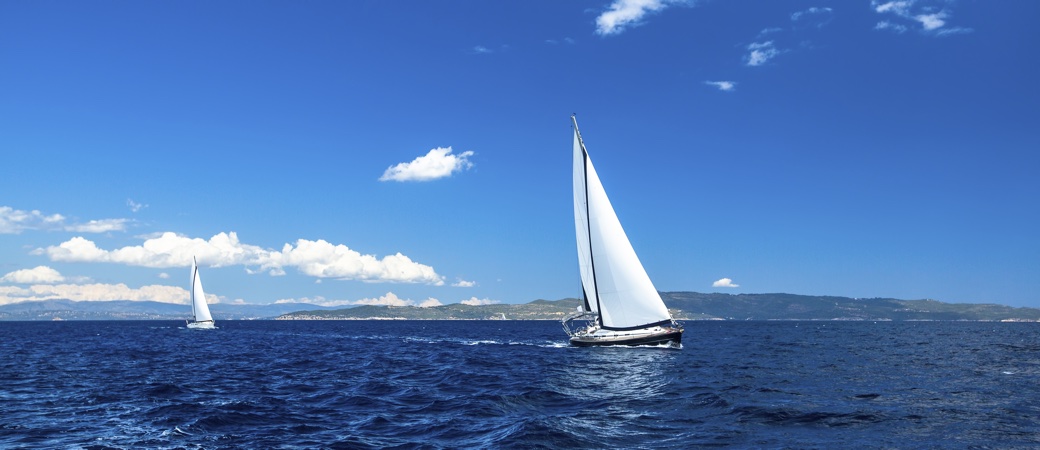My grandfather used to take us out fishing on Flaming Gorge Reservoir. We’d drop our line in the water and learn patience while we waited for a fish to be attracted to the shiny lure. Occasionally, it would work, and Grandpa would help us reel in our catch, and we’d have fried lake trout for dinner. (Grandma always had a backup menu planned.)
As we’d pass the marina, full of moored sailboats, I used to marvel at how the wind would always seem to be blowing the direction they needed to go. Then one day I saw two sailboats cross paths, heading in opposite directions! My ten-year-old mind was blown.
After a couple of diagrams sketched on napkins at dinner, I started to understand something profound. All the sailboats out there were experiencing the same wind, but they were able to head in different directions because of how the sailor chose to respond to that wind.
The first trips taken by water were like the people riding inner tubes down below the dam. Put something that floats in the river, climb in, and let the current take you where it will. It’s a fun way to spend the afternoon, splashing around and soaking up the sun, but only useful if you’re leisurely heading downstream. If you want to go up stream, you have to get something that pushes against the water harder than the water pushes on you.
Up on the reservoir, we could point our little twelve-foot boat in the direction we wanted to go, and the outboard motor would push us along. Same thing for the speed boats that would come shooting along towing water skiiers—same principle, just faster. Both require an internal combusion engine.
Seven thousand years ago, someone realized that as long as there was a wind, you could make a sailboat move. Sometimes it’s a favorable wind, sometimes it’s not so cooperative. That all depends on where you’re trying to go.
You can sail into the wind. It isn’t done directly. First you sail 45° to the right of the headwind, then 45° to the left. You may need to travel farther by zig-zagging like this, but you can still use the wind to your advantage. Sailors call this “beating the wind”.
I love that term. How easy would it be to sit around and wait for a more favorable wind? Some sailors do, letting the wind beat them, but more enterprising sailors find a way to beat the wind. They take a situation that is out of their control (which way the wind is blowing) and choose a different response.
Sailing races include, usually by design, a stretch that is headed into the wind. This is where the sailors’ mettle shows. Anyone can make good time with a favorable wind. That’s easy. What do you do when life throws everything at you it can?
Are you content to sit back and let life take you where it will? You’ll have lots of company. You’ll probably even enjoy the ride.
If you have a destination in mind, you’re going to need to face the wind. It will sometimes be unpleasant. It will usually mean more work. That’s why you’re going to achieve more than those who just drift along. You’re doing something they aren’t willing to do, so you will dine on fresh lake trout while they enjoy canned ham.
No matter what wind you face, you can always beat the wind. And when the wind dies down completely, break out the oars.
Question: How do you turn adversity to your advantage? Share your thoughts in the comments, on Twitter, LinkedIn, or Facebook.

